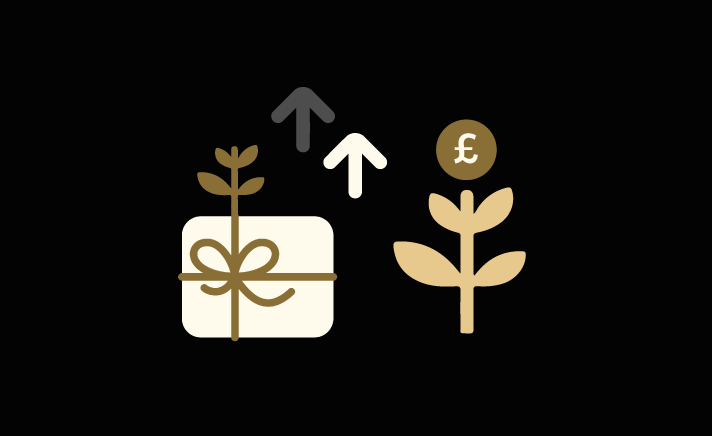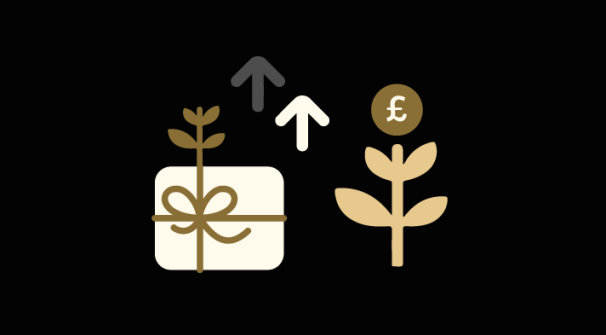The Donor Advised Fund or ‘DAF’ model for charitable donations has been quietly gaining a firm foothold in the world of UK philanthropy in recent years¹.
DAFs are increasingly recognised as a less bureaucratic alternative to a traditional charitable trust, but how exactly does a DAF work and how does it stack up under scrutiny?
Before we take a deep dive into the relative merits of the two vehicles, it is worth considering how philanthropic motivations and aspirations are changing for the new generation of major donors as this in turn informs the optimal choice of giving vehicle.
The changing landscape of philanthropy
Emerging philanthropists are strategic in their decision-making, looking to optimise their impact through a more holistic approach to philanthropy. As The Beacon Collaborative’s Giving Experience Report² explains, ESG/impact investing has moved up the agenda and the line between investment initiatives and philanthropic activities is increasingly likely to be blurred. With this more ambitious view of philanthropy comes challenges – how do you achieve effective integration of your business and philanthropic goals and how do you determine which impact opportunities to invest in and which causes to support? At the same time, public trust in institutions is at an all-time low with only just over half of the UK population saying they find the charity sector trustworthy according to the CAF UK Giving Report 2023³.
Flexibility and collaboration through the DAF model
The ease and convenience of the DAF model has made it the fastest growing philanthropic-giving vehicle over the past few years⁴. Its principal advantage over the traditional charitable trust or foundation model is that it provides a flexible, practical framework for major donors. A DAF provider can also partner with advisers to provide complementary support for their clients’ philanthropic aims, building trust and loyalty between clients and advisers in the longer-term.
Comparing the charitable trust and DAF models
The benefits of a DAF can be summarised as accessibility, anonymity and flexibility. The table below lays out the key points for comparison.
Point for comparison |
Charitable trust |
DAF |
| Set-up time | Several months | Immediate |
| Set-up cost | Substantial legal fees | No start-up costs |
| Ongoing costs | Significant – includes administration, developing policies and procedures, legal advice, accounting, audit and regulatory reporting | Usually lower - a DAF provider typically deducts a one-off fee on gifts or an ongoing fee on the balance |
| Anonymity | No | Yes, if desired |
| Board structure | Yes | Not required |
| Admin | Claiming Gift Aid; due diligence, grant agreements, managing grant payments and follow-up reporting; maintenance of bank accounts and investments; accounting and audit; reporting to regulators (Charity Commission, Companies House, HMRC) | No annual returns; donor simply requests grants and/or impact investments; DAF provider claims Gift Aid and handles all compliance and administration |
| Expertise | May employ an administrator | Access to the wide range of skills and sector knowledge within the DAF team |
When is it best to use the DAF vehicle?
The DAF model is perfect for grant making; it is nearly always the right choice for gifts under £10 million. Its flexibility also extends to how you allocate your account balance – in addition to making grants to your selected causes, you can also grow the balance of your account for the longer term by requesting that some or all of it be invested. You can engage in social impact investment by allocating your account balance to support a charity with a loan or other funding arrangement. By providing long-term capital, you can help charities to scale up and become more sustainable. Of course, the investment also has the potential to generate a return to your DAF that can then be recycled into further social investments or grants.
The DAF model is also very helpful for legacy-making; it can handle more complex gifts, for example property or shares, and it permits an Expression of Wishes which enables the donor either to allocate funds directly to one or more charities or to appoint a named successor for their DAF account. This is popular with clients who want to ensure their legacy continues with the next generation. Where multiple charities are named, the DAF provider acts as a neutral intermediary, facilitating the gifts on behalf of the donor’s estate and so protecting lay executors from direct contact with the named charities. Another benefit is that an Expression of Wishes can be updated at any time without having to incur lawyer’s fees.
When is a charitable trust or foundation more optimal?
The DAF model isn’t suitable for public fundraising events or for operational projects. Some donors also prefer the sense of greater control over their charitable fund that a charitable trust gives versus the DAF vehicle where the fund legally belongs to the DAF provider. In reality however, that control is limited because the trust structure doesn’t allow for a sole trustee and grant-making decisions have to be approved by all trustees.
The flip side of that drawback is the valuable support that comes from a shared approach to grant strategy and decision-making which can go a long way to making the philanthropist’s journey a less lonely one. Recognising this gap in the DAF model, we introduced our innovative Donor Advisory Board service, which allows for advisers, family members and other trusted third parties to be involved in a similar way to trustees, but without the associated legal and administrative burden. The independent structure of the DAF model also avoids potential conflicts of interest.
Further information
To find out more, browse our Philanthropy Services brochure and read some of our donors' giving stories.
¹ According to NPT’s 2022 DAF report, contributions to donor advised funds in 2021 totalled £626.3 million, an increase of 6.7 per cent. The compound annual growth rate for contributions from 2017 to 2021 was 7 per cent.
² The Beacon Collaborative’s Giving Experience Report:
⁴ Philanthropy Roundtable, February 2021
Adapted from Rachel Steeden’s article ‘The latest model’, which appeared in STEP Journal (Vol31 Iss5), pp.56-57.
Impact
Quarterly email for philanthropists. News, inspiration and guidance to support you on your giving journey.











